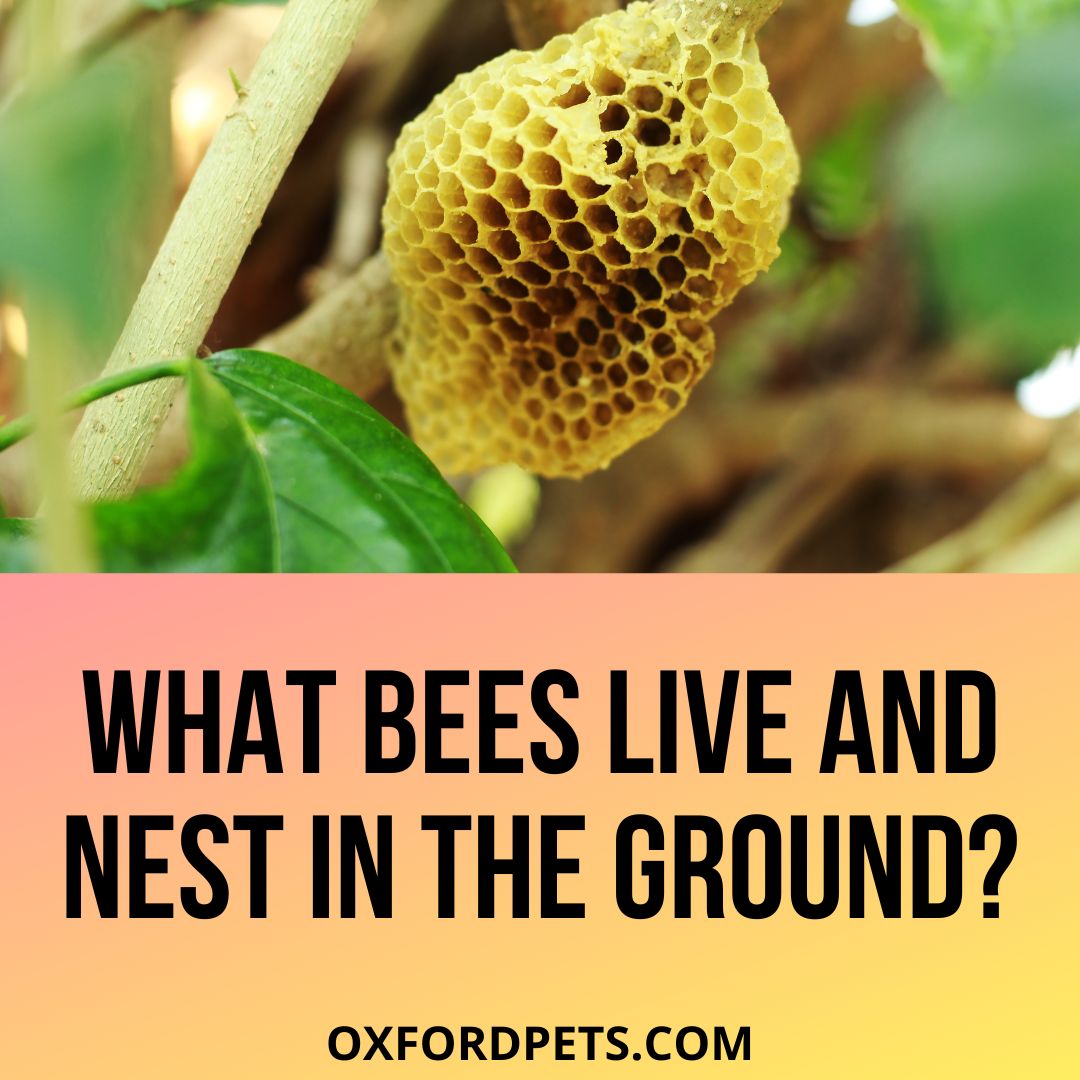What are ground-nesting bees? Ground-nesting bees are a type of bee that builds its nest in the ground. In fact, 70% of 20,000 bee species live and lay eggs in underground nests. These bees are important for pollination, as they travel to different planets to collect nectar and pollen. Learn about these fascinating bees in this article!
Contents
- What are ground Nesting bees?
- Why is it important to protect ground Dwelling bees?
- What kind of bees have hives in the ground?
- Do ground-nesting bees sting?
- Ground nesting bees vs wasps
- How To Get Rid Of Ground Bees?
- Where do ground-nesting bees live?
- How do ground-nesting bees build their nests?
- What are the benefits of having ground-nesting bees in your garden?
- How to get started keeping ground-nesting bees in your garden
- Final words
- Frequently asked questions
What are ground Nesting bees?
Ground nesting bees are often called solitary bees because they live and reproduce alone. They build their nests in the ground or in low-lying vegetation and are most common in temperate climates. There are around 20,000 species of solitary bees, most of which are small and black.
The females typically only produce one offspring at a time, and they nurse their young for up to six months. Ground-nesting bees are important pollinators of plants, and some species are considered endangered or vulnerable.
Why is it important to protect ground Dwelling bees?
While honey bees pollinate 0.33% of the meals we eat, local bees are accountable for pollinating 80% of the world’s flowering plants. Countless ecosystems rely on their tough work, however, pesticides, lack of habitat, and weather change are simply a number of the elements that threaten their survival across the world.
Greater than ¼ of North America’s 46 bumble bee species — all ground nesters — face a few degrees of extinction risk.
In fact, in October of 2021, it turned into decided with the aid of the U.S. Fish and Wildlife Service that the American Bumble Bee should qualify for safety under the Endangered Species Act due to the fact its population has dropped almost 90%.
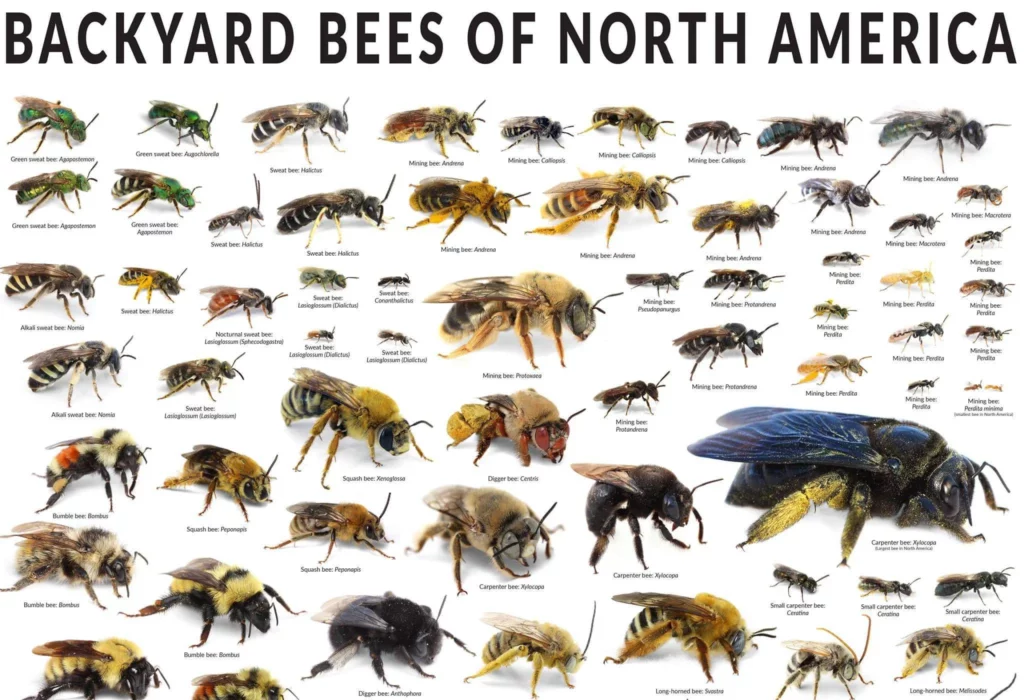
What kind of bees have hives in the ground?
Here are 8 types of ground bees
Miner Bees
These bees are also called the digger bees. It is a feature of what these bees do that it is where they get their name from.
Miner bees come in a variety of colors and sizes and may have hairless or hairy abdomens.
The most common color in these bees is black & white stripe. Miner bees are also solitary bees that dig into the soil to build their nests. The female bee will store pollen & nectar for the young once when they hatch.
Mason bees
Mason bees are solitary and they stay withinside the ground. All the females of the species are fertile and they are able to construct underground nests.
There is no queen or worker bee hierarchy in this species. These bees are recognized for constructing nests in naturally-happening tubular cavities.
A female bee may be searching out such a hollow space for up to a few days. Once the proper spot has been diagnosed the female Mason bee moves directly to discover pollen nearby. She gathers the pollens and saves them withinside the newly-found cavities.

Carpenter Bees
These bees get their name from their nesting in portions of wood. This is generally lifeless wooden which may be found above the ground or underground. These bees use body vibrations to dig into the wood.
The ensuing bits of wood are then used to create chambers inside or they may be absolutely discarded.
Female Carpenter bees are accountable for digging and constructing nests. One female is dominant or all of the females work collectively to dig in lifeless wood.
The other female Carpenter bees protect the nest whilst there is a clear female chief withinside the group.
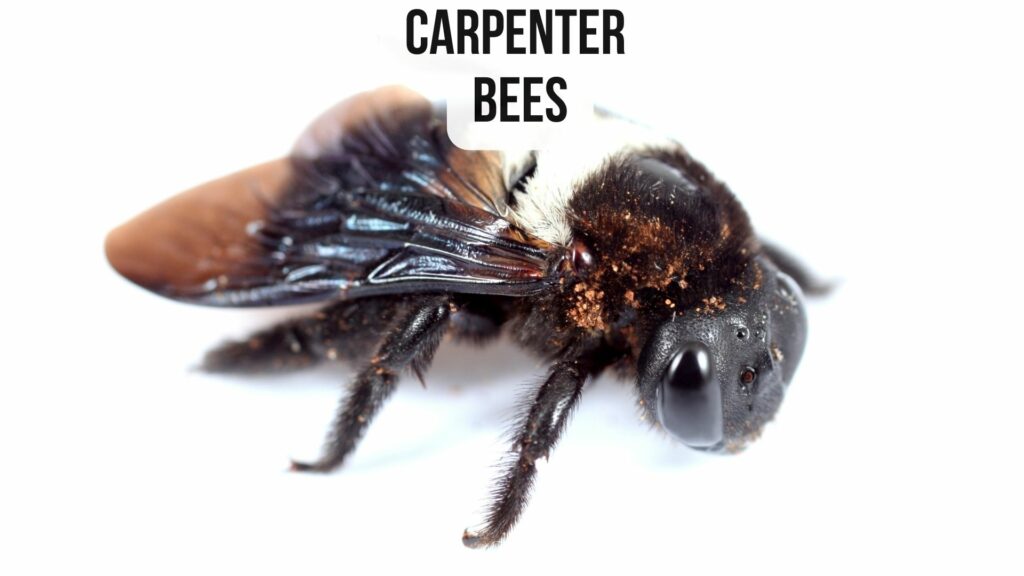
Leafcutter Bees
Similar in size to honeybees, these bees get their name from the potential to cut and bite leaves. Leafcutter bees are commonly interested in using leaves to construct shelters. Many leafcutter bees search for shelters underneath the floor.
These need to be tunnel-shaped for the bees to just accept them. Some Leafcutter bees additionally stay above ground level.
The female bee uses leaves to seal off chambers within the tunnels. These chambers keep an egg and pollen in the shape of a pellet. The female Leafcutter bee continuously builds new chambers and adds new eggs till a tunnel is full.
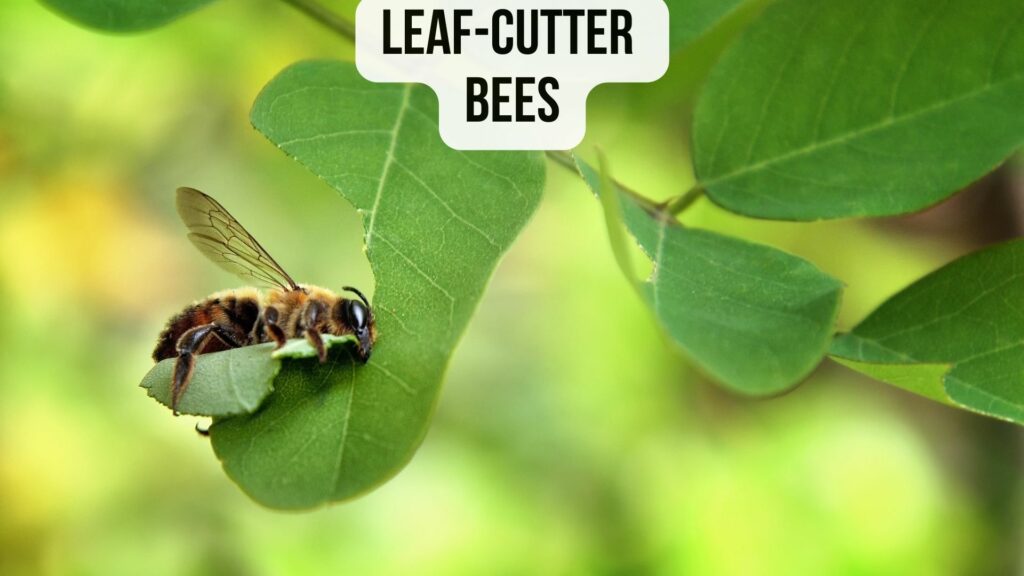
The Sweat Bees
Sweat bees love to sweat and Usually, they nest underground and lay eggs on river banks and soft soil.
Sweat bees lay eggs in the nest by creating cambers and laying pollen.
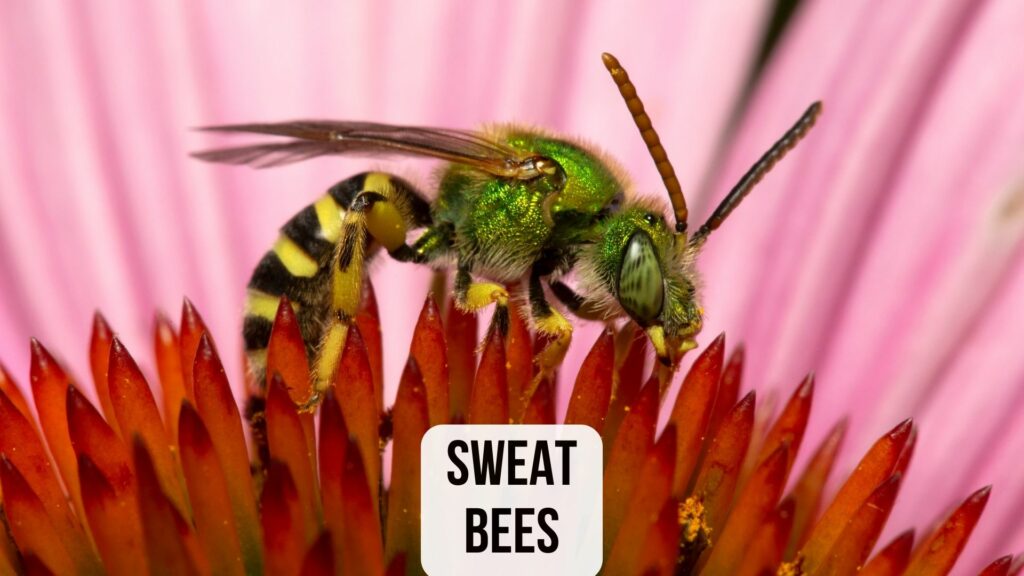
Wool-Carding Bees
These bees make nests in cavities, human-made structures, and holes. Wool-carding bees collect hairy fibers from plants.
Hence, they got this name from this habit. The fibers are useful in creating the chambers.
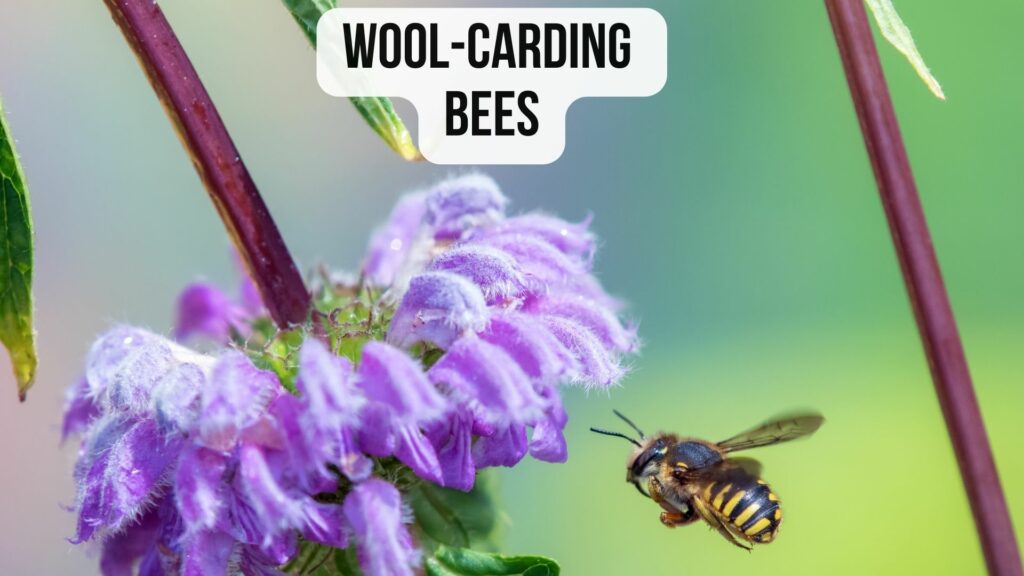
Blueberry Bees
Blueberry bees usually build underground nests.
Their nests are located in sandy soil where they build different tunnels and chambers. Blueberry bees lay eggs and pollen.
Squash Bees
These bees build nests underground. They usually dig vertical tunnels that lead to underground chambers.
Squash bees have a favorable role. These are among the common butternut and squash pollinators.
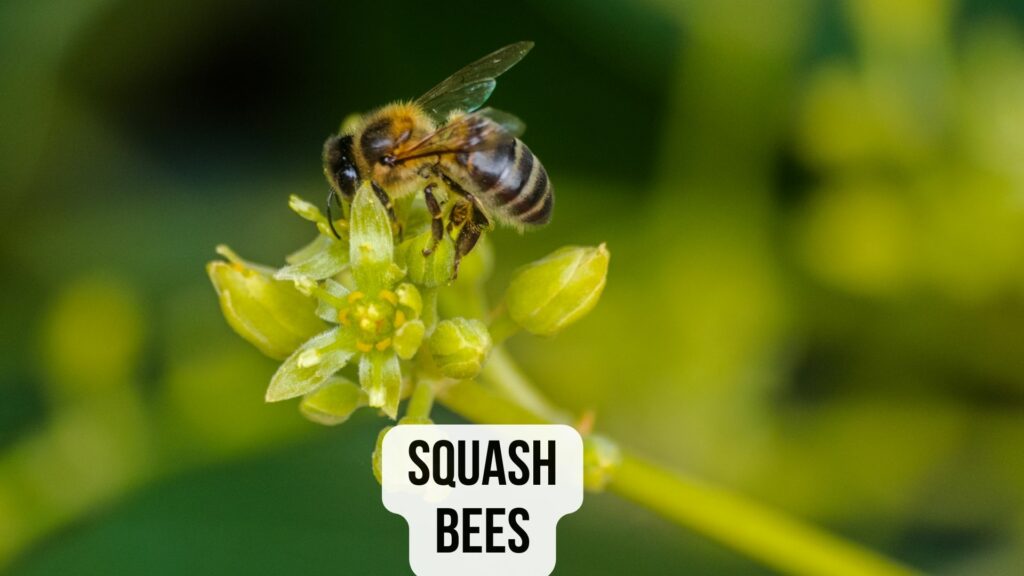
Large bees that live inside the ground
Bumblebees
The bumblebee is the maximum recognizable ground bee.
They assemble their nest underground frequently in vintage mouse or rabbit burrows, or different holes and gaps shaped naturally.
The queen bumble will keep up honey and lay eggs after which generally tend to them as soon as hatched.
Sometimes the nest itself might be pretty near the surface and shaped with wax and pollen.
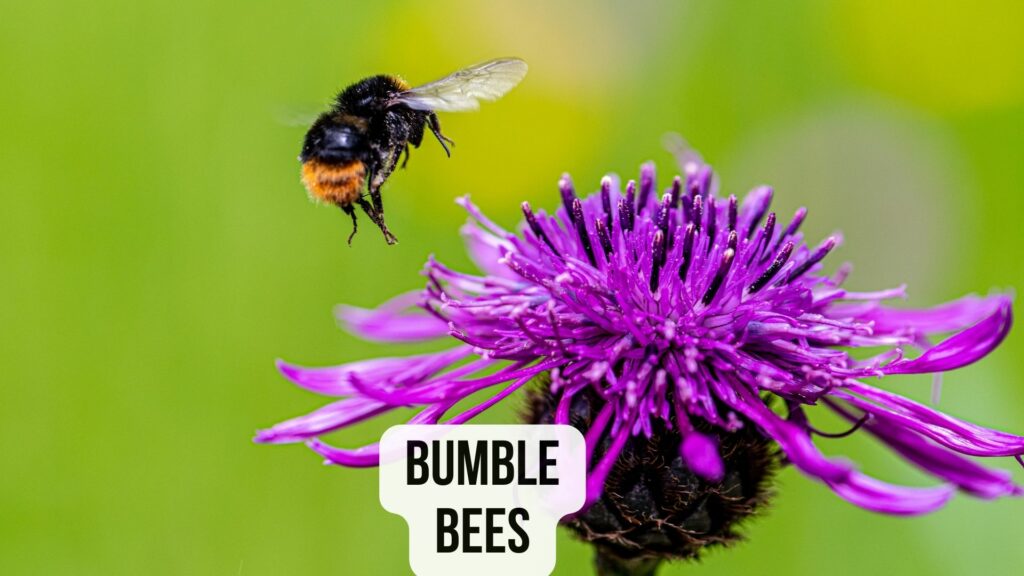
Yellow Bees That Live In The Ground
Alkali Bees
Alkali bees look like honeybees as they have bright, yellow strips on their bodies. However, they are smaller than honeybees. Usually, they go for salty soil and it is commonly present in western and southwestern United States.
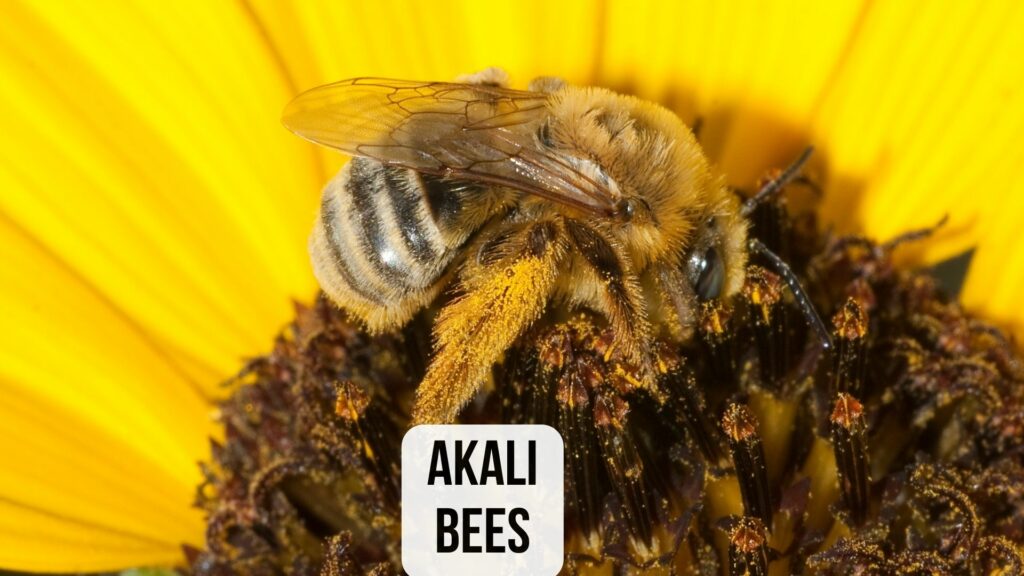
Do ground-nesting bees sting?
Most ground bees have a tendency to be very mild and non-aggressive, however, they can sting.
If they believe their lifestyle or nest is prone to threats, they may guard it by trying to sting anyone nearby.
If you were to by chance dig right into a nest, the bees would attempt to sting you.
However, it is right to be conscious that some bees stay underground, that way you will be less amazed if (or whilst) you encounter one.
The other common way a ground bee nest is by chance disturbed is whilst mowing the lawn.
This will convey the bees out, however, they do not have a tendency to gather in bee swarms as with different species.
There are different wasps and bees that nest withinside the ground that are not technically ‘ground bees.’ Yellow Jackets, for example, additionally nest withinside the ground, however, aren’t a kind of ground bees.
Ground nesting bees vs wasps
| Characteristics | Bees | Wasps |
|---|---|---|
| Feeding habits | Pollinators | Predators |
| Aggression | Less aggressive | More aggressive |
| Identification | Long, fat, dangling legs, two pairs of wings | Long, thin, dangling legs, two pairs of wings |
| Social or solitary? | Social | Can be social or solitary |
| Kingdom | Animalia | Animalia |
| Order | Hymenoptera | Hymenoptera |
| Class | Insecta | Insecta |
| Suborder | Apocrita | Apocrita |
| Hives | Geometrics wax hives | Papery nests |
| Phylum | Arthropoda | Arthropoda |
| Legs | Wide and flat | Waxy and round |
| Physicality | Hairy legs and body | Smooth legs and body |
How To Get Rid Of Ground Bees?
These bees are typically very easy to transport, without using overly dangerous sprays, poisons, and other deadly techniques.
If you need to move them, flip the lawn hose on low and put it down into the nest to flood it.
Ground bee nests have a couple of exits/entrances, and they’ll quickly move to any other location.
Where do ground-nesting bees live?
Ground-nesting bees are found in both temperate and tropical regions all over the world. They live in nests underground or in cavities in trees or other plants. These nests can vary in size, but they are typically made of mud, clay, stems, and sometimes leaves or flowers.
Why do ground-nesting bees live underground?
Ground-nesting bees live underground to escape the cold winter months and hot summer days. They also like to nest close to water sources so they can collect rainwater for hydration.
How do ground-nesting bees build their nests?
Ground-nesting bees are unique in that they build their nests on the ground. This is a trait that allows them to thrive in areas where other bees cannot.
The bees first excavate a small tunnel near the entrance of their nest.
They then use this tunnel to bring soil and other materials up to the entrance of the nest. Bees then add this material to the inside of the tunnel, forming a wall.
Finally, continue to add material until the wall is tall enough to protect them from predators and the sun.
What are the benefits of having ground-nesting bees in your garden?
Ground-nesting bees are a great way to increase the production of your garden. Not only do they help pollinate your plants, but they also provide you with honey, wax, and pollen.
Nevertheless, their habit of nesting in the ground means that they are less prone to disturbance by humans or other animals.
How to get started keeping ground-nesting bees in your garden
If you’re thinking of adding some honeybees to your garden, ground-nesting bees may be a good option. These bees live in colonies of just a few dozen individuals and are particularly apt for urban or suburban gardens.
Here’s how to start off with ground-nesting bees:
1. Decide what you want from your colony. Ground-nesting bees are great for pollination, but they also produce small quantities of honey, so you’ll need to decide whether that’s important to you.
2. Get the right equipment. You’ll need a beekeeping hive, which you can buy online or at a local garden center. Make sure the hive is large enough for the number of bees you plan to keep and has ventilation holes so the bees can breathe.
3. Site the hive. Place the hive on an elevated spot in your garden where it will have plenty of sunlight and air circulation. If there’s already a bush or tree in the area that the hive can sit on, great – use that as your foundation. However, if there’s no available treetop space nearby, you’ll need to build one yourself using straw bales or pallets
4. Get the bees. Once you have the hive set up, it’s time to get the bees. Ground-nesting bees are not easy to find, so you’ll likely need to order them online or through a beekeeping supply company. Make sure to read all of the shipping information before you make your purchase so you know how to get the bees safely to your garden.
5. Start the colony. Once you have the bees, it’s time to start placing them in their new home. Fill the hive with foundation (a mixture of fresh earth, straw, and hay), place the bees on top, and seal the lid. Leave the hive alone for one to two weeks so that the bees can adjust to their new surroundings.
6. Enjoy your colony! Now that the bees are settleing down, it’s time to start enjoying their honey and pollination services.
Final words
In conclusion, I would say that there is an extended list of bees that live and nest in the ground. We have listed a few of them. I hope you find it helpful.
We will be back with other interesting and informative articles. Till then stay connected. Thank you.
Frequently asked questions
What kind of bees nest in the ground in Florida?
Bumblebee
Perdita
Miner bees
Yellowjackets
Are There Ground nesting bees in Ohio?
Digger bees or ground bees- Digger bees are solitary, but they live in common areas where there are some burrows.
You can find several species in Ohio. however, all are dark in color and are hairy. These bees are around half-inch long.
Are There Ground nesting bees in Michigan?
You can find digger bees in Michigan. They have this name because they have a habit of digging their nest in soil. Leafcutter bees, mason bees, and sweat bees also nest underground.
Are There Ground nesting bees in Virginia?
Andrenid bees are one of the first bees you will see in the spring. These bees are also known as mining bees. They nest in the ground in large numbers. Although they are solitary, they nest near other bees when they find good soil.
Are There Ground Nesting bees in the UK?
Mining bees: You can find 65 species of bees of the genus Andrena in Britain. Hence, Andrena is the largest bee genus in Britain. These types of bees are of different sizes ranging from 5 to 17mm long. They all nest in soil.
Are There Ground nesting bees in California?
Bees from the Andrenidae group are called mining bees. They are usually solitary and nest in the ground. In their nests, the females construct tunnels and fill them with pollens. After that, they lay their eggs in those tunnels.
Are There Ground nesting bees in Ireland?
You will most commonly find mining bees in Ireland. Mining bees make their nests in the bare ground made of clay, sand, peat, or soil.
